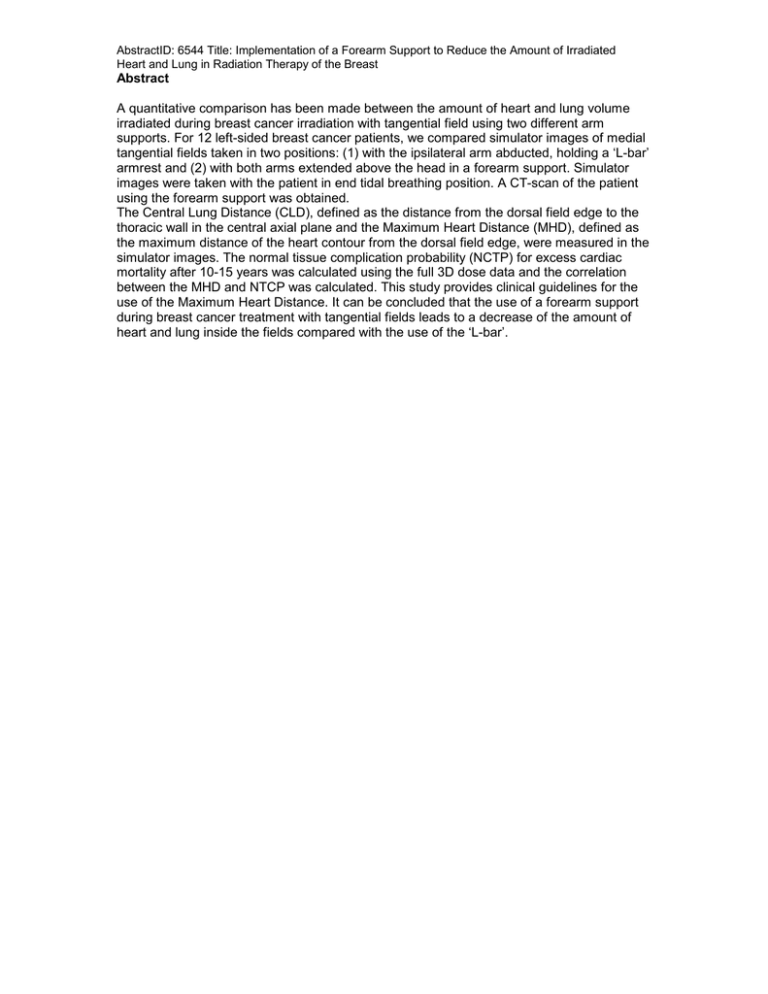AbstractID: 6544 Title: Implementation of a Forearm Support to Reduce... Heart and Lung in Radiation Therapy of the Breast
advertisement

AbstractID: 6544 Title: Implementation of a Forearm Support to Reduce the Amount of Irradiated Heart and Lung in Radiation Therapy of the Breast Abstract A quantitative comparison has been made between the amount of heart and lung volume irradiated during breast cancer irradiation with tangential field using two different arm supports. For 12 left-sided breast cancer patients, we compared simulator images of medial tangential fields taken in two positions: (1) with the ipsilateral arm abducted, holding a ‘L-bar’ armrest and (2) with both arms extended above the head in a forearm support. Simulator images were taken with the patient in end tidal breathing position. A CT-scan of the patient using the forearm support was obtained. The Central Lung Distance (CLD), defined as the distance from the dorsal field edge to the thoracic wall in the central axial plane and the Maximum Heart Distance (MHD), defined as the maximum distance of the heart contour from the dorsal field edge, were measured in the simulator images. The normal tissue complication probability (NCTP) for excess cardiac mortality after 10-15 years was calculated using the full 3D dose data and the correlation between the MHD and NTCP was calculated. This study provides clinical guidelines for the use of the Maximum Heart Distance. It can be concluded that the use of a forearm support during breast cancer treatment with tangential fields leads to a decrease of the amount of heart and lung inside the fields compared with the use of the ‘L-bar’.




